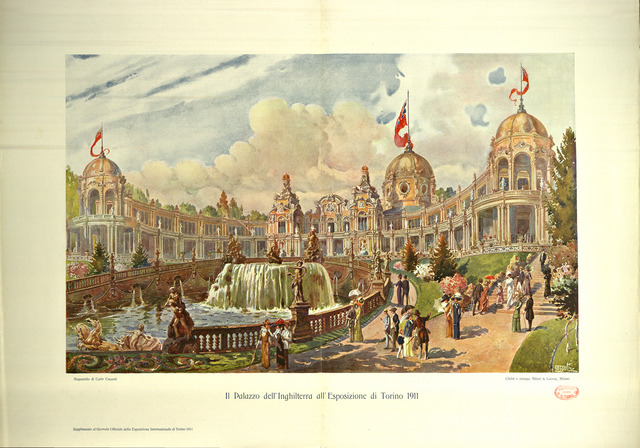Search
DONATE
Protagonists
Main Themes
Location
Financial/Statistical Data
Featured Works
Key Events
England
At the beginning of the 20th century, Queen Victoria was succeeded by Edward VII, who reigned for nine years (1901-10). As the Britannia Encyclopedia underlines, King Edward was known as the "Peacemaker" for his diplomacy in Europe; in fact, he used his knowledge of French, Spanish, Italian and German to good advantage.
In October 1908, King Edward asked the Board of Trade President, Sir David Lloyd George, to create a special Committee: the members should report the economic and cultural advantages gained from former participations in Universal Expositions, with the scope to evaluate the future involvement of England in such events. This Committee concluded how profitable Universal Expositions have been for the country, in particular in terms of technological advancements, economic profit, diplomatic relations and cultural propaganda; in addition, since the large numbers of Expositions every year, the Committee suggested to attend only the ones organized by Germany, France, Italy and United States.
Finalmente le considerazioni di carattere politico possono essere ragioni di intervento a questa o quella Esposizione. […] Tale intervento britannico alle più importanti Esposizioni estere, essendo quindi una necessità, occorre che esso sia adeguato all’importanza della Nazione, e se questo principio non fu sempre fin’ora osservato, dovrà d’ora innanzi ispirare l’azione del governo inglese. (“La partecipazione dell’Inghilterra all’Esposizione di Torino”, "Giornale Ufficiale Illustrato)
Following this direction, a specific Royal Committee was created for the Expositions of Rome and Turin 1911: it was made by a great numbers of members; Count of Lyllou Vittorio Alessandro served as President and Sir Saire Smith as Vice-President. During the first Committee meeting in April 1909, Prince of Galles Giorgio Alberto inaugurated the work with a long speech regarding the patriotic importance of the celebration in Turin, and the precious relationship between Italy and Great Britain since Risorgimento period. Indeed, in the second half of the XIX century, the Italian question seemed to be popular in England, thanks to both literary exchanges and the arrival of political refugees in the country (in 1851 the Italian community counted 1.600 individuals in the borough of Holborn); furthermore, observations of English political institutions and society motivated and influenced national debates in Italy. As CTI guide underlines:
E di quale alto significato morale e politico sia la partecipazione della forte Inghilterra a questa Mostra con cui l'Italia celebra il cinquantenario della sua costituzione in Nazione indipendente, ben se lo sa dire il cuore di ogni italiano che non sia oblioso della simpatia con cui l'Inghilterra seguì tutta l'epopea del nostro Risorgimento. (CTI Guide)
In conclusion, as the Giornale Ufficiale Illustrato suggests, thanks to the reciprocal respect between the two nations, the architects of Turin, Molli, Fenoglio and Salvadori, paid particular attention in designing the English Pavilion. In fact, it was intended to be located in an area of more than 20,000 square meters in front of the Monumental Fountain, one of the greatest attractions of the Park since the Universal Exposition of 1898.
Resources





